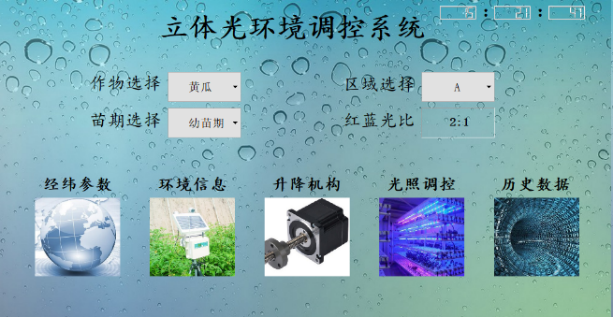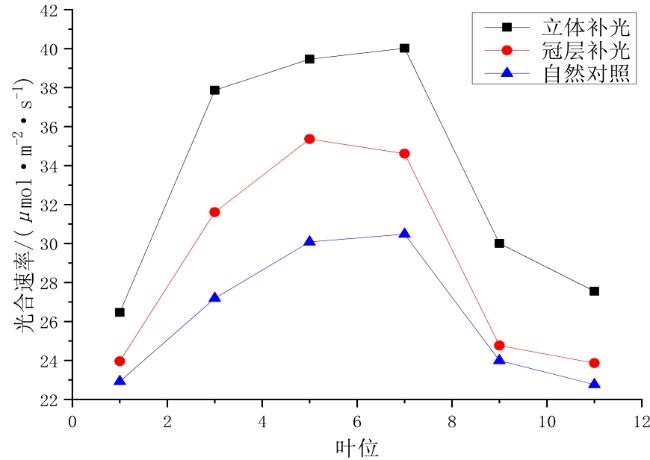近年来,科研团队在设施光环境智能调控方面已开展了部分研究
[7-10]。Pinho等
[11]研究发现动态调整光强度不仅可以促进生菜鲜重增加,还可以降低能耗,进而设计了一种适用于植物工厂的动态补光控制系统。刘晓英等
[12]开发了一种光参数柔性可调的发光二极管(Light-Emitting Diode,LED)光源系统,为探究光质、光强度、光周期对设施作物生长相互影响规律提供了一种灵活的光参数配比系统。上述两种光调控系统用于植物工厂中叶菜类的种植,其环境因素相对稳定可控,调控策略相对简单。而温室中藤蔓类作物的光环境调控系统较为复杂,不仅要考虑环境动态变化,如光照、温度、二氧化碳等对光调控系统的影响,还需考虑作物不同生长阶段的需光差异性。为此,胡瑾等
[13]设计了基于无线传感器网络的光环境调控系统,该系统利用自然光中太阳高度角与红蓝光比例关系,可根据作物实际需光量进行精准定量补光,具有部署灵活、易扩展、低能耗等优势
[14]。苏战战等
[15]为满足温室番茄光环境的自适应调控,设计了一种基于随机森林-萤火虫群优化算法(Radom Forest-Glowworm Swarm Optimization,RF-GSO)模型的温室番茄自适应调光系统。还有一些学者尝试改变补光的方式来提高作物的光合速率
[16-18],并取得了一定的成效。但现有的设施光环境调控方式多采用冠层定量补光方式,未考虑植物冠层新生叶结构发育不健全导致光抑制或光破坏现象
[19,20]和株间功能叶片相互遮挡导致光照不足未能达到按需补光需求。研究表明植物不同叶位光合能力存在明显差异
[21-24],因此针对作物不同叶位进行按需补光对提升整株光合能力和促进植株物质积累具有重要的意义。






















